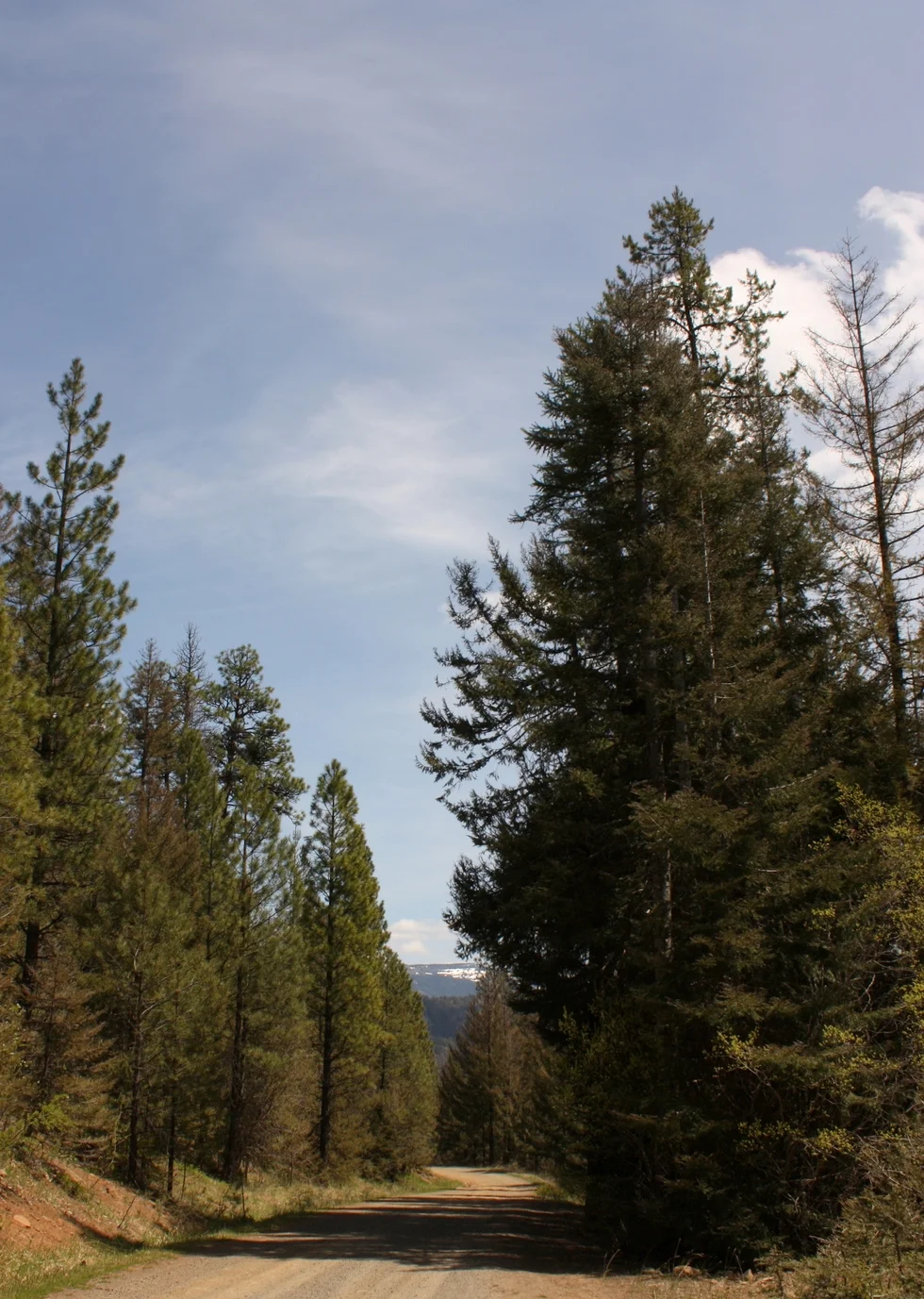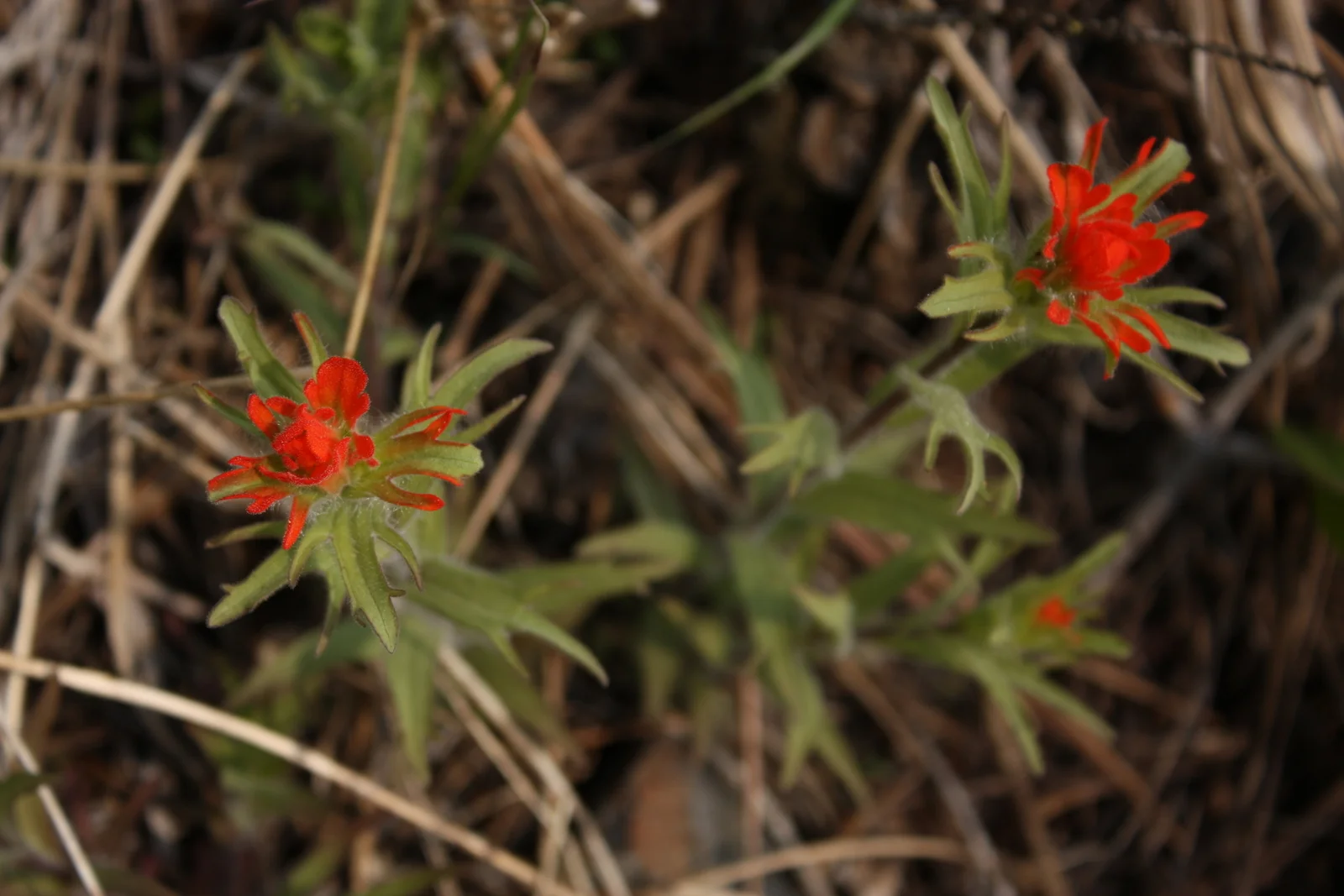











May 19, 2012: So I suppose in the strictest of senses, this was not a terribly successful morel hunting expedition out on some Forest Services roads in Central WA, but if you go with the idea that a walk in the woods is always a pleasure, then anything you find is just a bonus. Besides, I found some other stuff I don't usually see right around our Puget Sound environment.

Naomi brought Roger, whom she's training to hunt morels. He didn't necessarily find any, but since there seemed to be nearly none to be found, it wasn't really possible to fully test his powers of mushroom hunting.

Fairyslipper (Calypso bulbosa - Orchidaceae). Per Pojar: "This beautiful (and deliciously perfumed) little orchid, though widespread, is rapidly being exterminated in populated areas due to trampling and esp picking...The Haida called the corms [bulbs] 'black cod grease' because of their rich, butter-like flavor...Haida girls ate the corms raw to enhance their bustlines." Not recommended for harvest today due to rarity in places.

Believe this is Arrowleaf Balsamroot (Balsamorhiza sagittata - Asteraceae family). Per the Forest Service: "Nearly all parts of this plant were used as food by various Native American groups. The roots may be baked or steamed and eaten, as well as the young shoots. The immature flower stems could be peeled and eaten; the flowers themselves are good browse for wildlife. Balsamroot seeds are nutritious and oil-rich, another good source of food. The root could be used as a coffee substitute. It was also used medicinally."

Paintbrush (Castilleja - Scrophulariaceae), not sure if miniata (common red) or hispida (harsh) but leaning towards miniata.

None of us were sure what this is. We saw a variety of other fungi, but most were dried up. We are hypothesizing this dryness might explain the lack of morels. (Later thinking: Verpa conica maybe?)

At the time, I did not know what this was, but later ID'd for me by a pal: pinedrops (Pterospora andromedea).